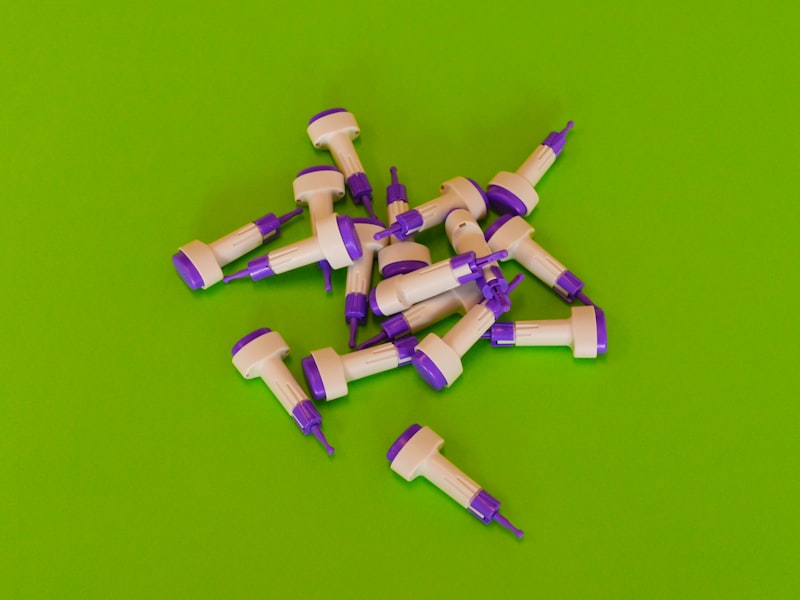One of the cornerstones of diabetes management is maintaining a healthy diet. This involves monitoring carbohydrate intake, choosing foods with low glycemic index, and incorporating plenty of fruits, vegetables, lean proteins, and whole grains into meals. By regulating blood sugar levels through diet, individuals can better control their symptoms and reduce the risk of complications.
Alongside diet, regular exercise is crucial in managing diabetes. Physical activity helps to lower blood sugar levels, improve insulin sensitivity, and maintain a healthy weight. Whether it’s brisk walking, cycling, swimming, or yoga, finding enjoyable activities that increase heart rate and engage muscles can significantly contribute to overall well-being.
In addition to lifestyle modifications, medication adherence plays a pivotal role in managing diabetes effectively. Many individuals with diabetes require oral medications or insulin therapy to regulate blood sugar levels. It is essential to follow healthcare provider recommendations closely, take medications as prescribed, and monitor blood sugar levels regularly to adjust treatment as needed.
Monitoring blood sugar levels is essential for understanding how the body responds to various activities and foods. By regularly checking blood sugar levels, individuals can identify patterns, make informed decisions about their diet and exercise regimen, and take necessary actions to maintain optimal blood sugar control.
Managing diabetes effectively is not just about controlling blood sugar levels but also about preventing complications. By adopting a proactive approach to diabetes management, individuals can lead active, healthy lives and minimize the risk of long-term complications such as heart disease, nerve damage, and kidney problems.

Effective diabetes management requires a holistic approach that combines healthy eating, regular physical activity, medication adherence, and diligent monitoring of blood sugar levels. By taking proactive steps and working closely with healthcare providers, individuals can empower themselves to live well with diabetes and enjoy a good quality of life.
Revolutionary Technologies Transforming Diabetes Management
Diabetes management has come a long way, thanks to revolutionary technologies that are changing the game for patients worldwide. Imagine having tools that not only monitor blood sugar levels but also predict potential highs and lows before they happen. This isn’t science fiction anymore—it’s the reality of modern diabetes care.
One of the most groundbreaking advancements is continuous glucose monitoring (CGM). Unlike traditional glucose meters that provide a snapshot of blood sugar at a single moment, CGMs track levels throughout the day and night. They use tiny sensors inserted under the skin to provide real-time data, empowering users with insights into trends and patterns. This proactive approach allows for better management decisions, minimizing the risk of dangerous fluctuations.
Another game-changer is the development of insulin pumps with advanced algorithms. These devices automate insulin delivery based on CGM readings, mimicking the function of a healthy pancreas more closely than ever before. Imagine a pump that adjusts insulin doses in response to meals, exercise, and sleep patterns—making life with diabetes more predictable and less burdensome.
Telemedicine has also revolutionized diabetes care by bridging the gap between patients and healthcare providers. Now, individuals can consult specialists, adjust treatment plans, and receive support—all from the comfort of their homes. This convenience not only improves access to care but also enhances overall patient outcomes by promoting regular monitoring and timely intervention.
Artificial intelligence (AI) is another transformative force in diabetes management. Machine learning algorithms analyze vast amounts of data from CGMs, insulin pumps, and other sources to personalize treatment plans. These AI-driven insights enable healthcare providers to tailor recommendations to each patient’s unique needs, optimizing control and quality of life.
The landscape of diabetes management is being reshaped by these revolutionary technologies. From continuous glucose monitoring to AI-driven personalized care, each innovation brings us closer to a future where living with diabetes is safer, simpler, and more manageable. As these technologies continue to evolve, so too will the possibilities for improving the lives of millions affected by diabetes worldwide.
Healthy Eating Hacks: Managing Diabetes with Flavor
Managing diabetes can seem daunting, but with a dash of creativity in your kitchen, it’s possible to turn your meals into delicious and diabetes-friendly delights. Healthy eating doesn’t have to be bland; in fact, it can be a flavorful journey that supports your health goals.

One of the key strategies in managing diabetes through diet is to focus on flavor without compromising on nutrition. Instead of relying on sugar-laden sauces or heavy oils, opt for natural herbs and spices to add depth to your dishes. For instance, cinnamon not only enhances the taste of your morning oatmeal but also helps regulate blood sugar levels. It’s a small change that packs a punch in terms of health benefits.
Another hack is to embrace the power of lean proteins and fiber-rich foods. Think grilled chicken paired with a vibrant salad bursting with colorful vegetables. This combination not only satisfies your taste buds but also helps stabilize your blood glucose levels throughout the day. The crunch of fresh veggies and the tenderness of well-cooked protein can make each meal a delightful experience.
Moreover, don’t shy away from experimenting with different cooking methods. Steaming, baking, or grilling your foods can lock in flavors without the need for excessive fats. Imagine the aroma of roasted vegetables lightly seasoned with garlic and rosemary—simple yet incredibly satisfying.
Incorporating these small changes into your daily routine can transform the way you approach food. It’s about enjoying meals that not only nourish your body but also excite your palate. By focusing on fresh, whole ingredients and mindful cooking techniques, managing diabetes can become a flavorful adventure rather than a restrictive regimen.
So, why not spice up your next meal with these healthy eating hacks? Your taste buds—and your health—will thank you for it.
The Role of Exercise in Controlling Blood Sugar Spikes
Ever wondered how a simple jog or a brisk walk could do wonders for your blood sugar levels? Let’s dive into the incredible role that exercise plays in keeping those spikes in check.
When we eat, especially foods high in carbohydrates, our blood sugar levels can skyrocket. This spike triggers our body to release insulin, a hormone that helps cells absorb glucose for energy. However, sometimes this process doesn’t work as smoothly as it should, leading to high blood sugar levels—a concern for those with diabetes or at risk of developing it.
Here’s where exercise steps in as a superhero. When you engage in physical activity, your muscles need more energy. To meet this demand, your body becomes more sensitive to insulin. This means insulin works more effectively, helping to lower blood sugar levels. Imagine insulin as a key unlocking cells to allow glucose inside—exercise makes those locks more responsive, preventing sugar from lingering too long in the bloodstream.
But that’s not all. Exercise isn’t just about immediate benefits. Regular physical activity also improves overall insulin sensitivity over time. It’s like teaching your body to manage its sugar levels better, even when you’re not working out. It’s a long-term investment in your health that pays off by reducing the risk of diabetes complications.
What’s fascinating is the variety of exercises that can help. From cardio like running or swimming to strength training with weights, each type has its unique way of enhancing insulin sensitivity. It’s like having a diverse team of helpers, each contributing to keeping your blood sugar in check.
So, next time you lace up your sneakers or hit the gym, know that you’re not just burning calories—you’re also giving your body a powerful tool to manage blood sugar levels. Exercise truly is medicine, offering both immediate and long-term benefits for your health.
Breaking Myths: Debunking Common Misconceptions About Diabetes
Diabetes, often misunderstood and shrouded in myths, is a condition that affects millions worldwide. Let’s break down some of the common misconceptions surrounding diabetes to clear the air.

Many people believe that indulging in sweets or sugary treats directly causes diabetes. In reality, while a diet high in sugary foods can contribute to weight gain, which is a risk factor for type 2 diabetes, sugar alone isn’t the sole culprit. Diabetes is a complex interplay of genetic, lifestyle, and environmental factors.
Carbohydrates, found in foods like bread, pasta, and fruits, do affect blood sugar levels, but they are a crucial part of a balanced diet, even for diabetics. The key lies in moderation and choosing complex carbohydrates that are digested more slowly, helping to maintain stable blood sugar levels.
While being overweight or obese and aging are risk factors, diabetes can affect anyone, regardless of age, weight, or fitness level. Type 1 diabetes, for instance, is an autoimmune condition often diagnosed in children and young adults, while type 2 diabetes can develop in individuals of any age.
Diabetes is more than just a simple inconvenience; it’s a serious health condition that, if not managed properly, can lead to complications such as heart disease, kidney damage, nerve damage, and even blindness. Proper management through medication, diet, and lifestyle changes is crucial to living a healthy life with diabetes.
Insulin is a vital treatment for managing diabetes, especially for individuals with type 1 diabetes who produce little to no insulin on their own. However, it is not a cure. Managing diabetes involves a comprehensive approach that includes monitoring blood sugar levels, making dietary adjustments, staying active, and taking medications as prescribed.
Diabetes cannot be caught like a cold or flu. It’s not transmitted through casual contact or sharing food. Instead, it develops due to a combination of genetic predisposition and environmental factors.
Understanding the truths behind these myths is essential for supporting individuals living with diabetes and promoting awareness in our communities.
Personal Stories: How Individuals Thrive with Diabetes Management
Imagine waking up every day knowing your body requires meticulous attention. For millions worldwide, this scenario isn’t just a thought experiment but a daily reality. Diabetes, a condition where the body struggles with insulin production or utilization, demands constant vigilance. Yet, amidst this challenge, individuals find incredible ways to thrive.
Personal stories abound with lessons of resilience and adaptation. Take Sarah, for example, a young professional diagnosed with type 1 diabetes at age 12. Instead of letting it define her, she embraced a proactive approach. Through careful monitoring of her diet, regular exercise, and leveraging technology like continuous glucose monitors, Sarah not only manages her condition but excels in her career and personal life.
Or consider John, who discovered he had type 2 diabetes in his mid-40s. Initially overwhelmed, he took small, consistent steps towards better health. By making gradual changes to his diet—reducing sugar intake and incorporating more vegetables—and committing to a daily walking routine, John not only lost weight but also improved his blood sugar levels significantly.
These stories highlight a crucial aspect of diabetes management: it’s not a one-size-fits-all approach. Each person’s journey is unique, influenced by lifestyle, genetics, and personal circumstances. What works for one may not work for another, and that’s okay.
The essence of thriving with diabetes lies in empowerment and education. From attending support groups to sharing experiences online, individuals find strength in community and knowledge. They learn from each other’s successes and setbacks, forging ahead with newfound resilience and hope.
From Counting Carbs to Smart Insulin: Latest Innovations in Diabetes Care
Imagine a world where instead of meticulously counting every gram of carbohydrates, a device seamlessly calculates insulin dosage based on real-time glucose levels. This isn’t science fiction anymore; it’s the reality of smart insulin pumps and continuous glucose monitors (CGMs). These devices work together to provide precise insulin delivery, mimicking the function of a healthy pancreas. They not only alleviate the burden of constant monitoring but also significantly reduce the risk of hypoglycemia and hyperglycemia.
Furthermore, researchers are delving into the realm of closed-loop systems, often referred to as artificial pancreas systems. These systems use algorithms to automatically adjust insulin delivery based on CGM readings, offering a hands-free approach to diabetes management. For individuals with type 1 diabetes, this means fewer highs and lows, allowing them to live more freely without the constant fear of blood sugar fluctuations.
Beyond devices, there’s a wave of innovation in medication. Smart insulins, under development, promise to revolutionize insulin therapy by reacting to glucose levels in the bloodstream. Unlike traditional insulins that have a fixed duration of action, smart insulins remain inactive until they detect a rise in blood sugar, thereby reducing the risk of hypoglycemia.
Moreover, the field of diabetes care isn’t just focusing on managing the disease but also preventing its complications. Advanced monitoring technologies coupled with big data analytics enable healthcare providers to predict and intervene before problems escalate. This proactive approach not only improves outcomes but also enhances the quality of life for patients.
In essence, the journey from counting carbs to embracing smart insulin represents a paradigm shift in diabetes care. It’s a testament to human ingenuity and relentless innovation aimed at empowering individuals to live healthier, more fulfilling lives despite the challenges posed by diabetes. As technology continues to evolve, so too will the possibilities for better diabetes management and ultimately, a cure.
Frequently Asked Questions
What are the key steps to manage diabetes daily
Learn key steps to manage diabetes daily, including monitoring blood sugar levels regularly, following a balanced diet with controlled carbohydrate intake, engaging in regular physical activity, taking medications as prescribed, and maintaining regular check-ups with healthcare providers.
How can medications help in controlling diabetes
Medications for diabetes help regulate blood sugar levels by either increasing insulin production, improving insulin sensitivity, or reducing glucose production in the liver. They are prescribed based on individual needs to maintain healthy blood sugar levels and prevent complications.
What lifestyle changes are essential for managing diabetes
Learn about crucial lifestyle changes for managing diabetes, focusing on diet, exercise, and medication adherence. Discover effective strategies to control blood sugar levels and improve overall health.
What are the recommended exercises for diabetic individuals
Discover effective exercises tailored for diabetic individuals to help manage blood sugar levels and improve overall health. Learn about low-impact activities like walking, swimming, and cycling, which are gentle on joints yet effective in promoting fitness. Understand the importance of regular physical activity in diabetes management and consult your healthcare provider for personalized exercise recommendations.
How does diet impact diabetes management
Learn how diet influences the management of diabetes, including the types of foods that can help regulate blood sugar levels and improve overall health.


